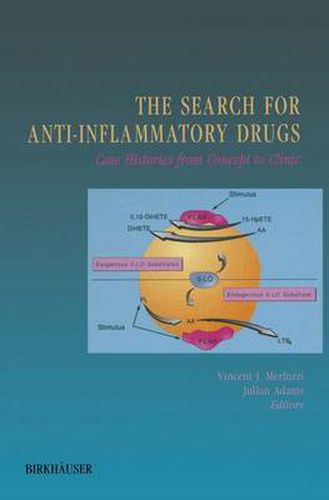Readings Newsletter
Become a Readings Member to make your shopping experience even easier.
Sign in or sign up for free!
You’re not far away from qualifying for FREE standard shipping within Australia
You’ve qualified for FREE standard shipping within Australia
The cart is loading…






This title is printed to order. This book may have been self-published. If so, we cannot guarantee the quality of the content. In the main most books will have gone through the editing process however some may not. We therefore suggest that you be aware of this before ordering this book. If in doubt check either the author or publisher’s details as we are unable to accept any returns unless they are faulty. Please contact us if you have any questions.
Perspectives on Anti-Inflammatory Drugs Inflammation is a very complicated process of interrelated events and cas cades that does not allow for an easily defined, focused attack for drug discovery. It is evident from years of research and development that certain classes of compounds (e.g., NSAIDs, steroids, and so on) have had a meas ure of success in alleviating pain and even dampening cellularlhormonal mechanisms involved in the process. Clear, mechanism-related therapies (e.g., for arthritis) and targeted drugs (e.g., for transplantation) have not been available in the past and, in reality, research in inflammation has re lied on more phenomenological approaches for resolving symptoms or on blatant cytoreductive approaches in cases like organ transplantation. In the last decade, approaches that have revealed novel cellular pathways in which intervention is possible for lymphocyte regulation (for example, cyclosporine and FK506) and small molecular weight mediators (e.g., leu kotriene inhibitors) are now either standard therapy or will be in a short time. These latter approaches have been the result of research from the 1970s up to the present.
$9.00 standard shipping within Australia
FREE standard shipping within Australia for orders over $100.00
Express & International shipping calculated at checkout
This title is printed to order. This book may have been self-published. If so, we cannot guarantee the quality of the content. In the main most books will have gone through the editing process however some may not. We therefore suggest that you be aware of this before ordering this book. If in doubt check either the author or publisher’s details as we are unable to accept any returns unless they are faulty. Please contact us if you have any questions.
Perspectives on Anti-Inflammatory Drugs Inflammation is a very complicated process of interrelated events and cas cades that does not allow for an easily defined, focused attack for drug discovery. It is evident from years of research and development that certain classes of compounds (e.g., NSAIDs, steroids, and so on) have had a meas ure of success in alleviating pain and even dampening cellularlhormonal mechanisms involved in the process. Clear, mechanism-related therapies (e.g., for arthritis) and targeted drugs (e.g., for transplantation) have not been available in the past and, in reality, research in inflammation has re lied on more phenomenological approaches for resolving symptoms or on blatant cytoreductive approaches in cases like organ transplantation. In the last decade, approaches that have revealed novel cellular pathways in which intervention is possible for lymphocyte regulation (for example, cyclosporine and FK506) and small molecular weight mediators (e.g., leu kotriene inhibitors) are now either standard therapy or will be in a short time. These latter approaches have been the result of research from the 1970s up to the present.